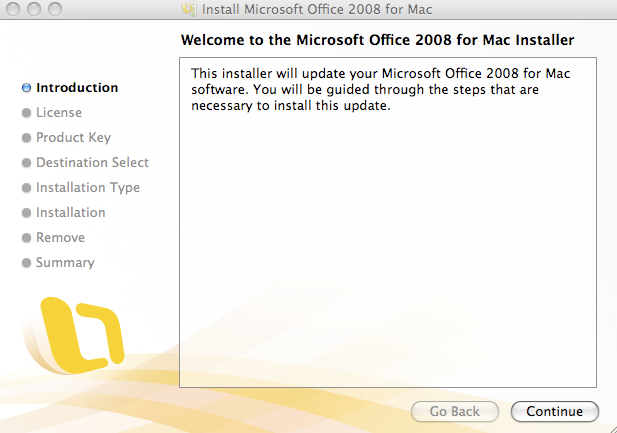How To Update Microsoft Office 2011 For Mac
In the Microsoft Office 2011 14.4.9 Update volume window, double-click the Office 2011 14.4.9 Update application to start the update process, and then follow the instructions on the screen. If the installation finishes successfully, you can remove the update installer from your hard disk. Microsoft on Tuesday updated Office for Mac 2011, the long-in-the-tooth productivity suite tailored to machines running Apple's OS X, with bug fixes, features and compatibility with the Office 365.
Microsoft has announced that it will be updating Office 2011 to support versioning, auto save, and full-screen for Mac OS X Lion; however, it may be a few months before those updates are ready. First, today we released an update to Communicator for Mac that fixes the 'crash issue' on Lion. It will come through Microsoft AutoUpdate in the next day or so.
How To Change Microsoft Office 2011 For Mac Language
Thanks for your patience on this. Second, Office for Mac 2004 will not (ever) work on Lion, as we stated in our original blog. The reason for this is because Office 2004 was a PowerPC-based product and Lion no longer includes Rosetta. Now would be a great time to upgrade to Office for Mac 2011 if you're upgrading to Lion!
Finally, the most common question yes, we are working hard with Apple to enable versioning, auto save, and full-screen for Office for Mac 2011. I know your next question will be 'when?' , and unfortunately I can't answer that but it's likely measured in months not days just to set expectations.
Microsoft has been readying its latest update to Office for Mac, and recently. We decided to give it a whirl and wanted uninstall Office 2011 to avoid any conflicts. Much to our surprise, uninstalling Office 2011 for Mac is a terribly complicated affair. It’s no great mystery why we’d want to uninstall Office 2011. It’s just never felt like a real OS X application, or even a decent version of Office. Yes, it gets the job done but the interface is a mess and downright ugly. Word 2011 for Mac is so, so ugly.
The new version of Office by contrast is clean and much more Office-looking. Office 2016 for Mac better resembles the Windows version, which will likely please switchers. Speaking of Windows, uninstalling Office on it is a simple matter of opening Programs & Features from the Control Panel and removing the application there. It takes a few minutes and is entirely automated.
Removing Office 2011 on Mac however, can be best described as a labyrinthine process. Microsoft lays the process out in, but it’s a little difficult to follow. It won’t hurt your Mac to simply drag the application folder to the trash and move on from there, but the Office installation (which is automated) places files all over your Mac, so if you really want it all gone, you have to root around your hard drive and delete everything by hand. Step Zero: Quit Everything The first thing you need to do before you can remove Office 2011 is to make sure none of its applications are running. The easiest way to do this is to simply use “Command + Tab” to switch between running apps.
If any are running, simply use “Command + Q” to quit them. Remove the Office Folder and Dock Icons Open your Applications folder and locate the “Microsoft Office 2011 folder. Click and drag it to the trash. While you’re at it, you can also remove the Office icons from your Dock (if you have any pinned there).

How To Update My Microsoft Office 2011 Mac
The simplest way to do this is to click and drag them out of the Dock. Microsoft divides this into two steps. You could simply stop here Office would be basically uninstalled, but as we said before, there’s a lot of little files that Office writes all over you drive. If you want it all gone, roll up your sleeves and get to it. Removing the Preferences, Subscription File, and License Once you remove the application files, it’s time to start removing all the little files spread throughout your system. One of the best ways to navigate your way through the Finder, is to. Adobe lightroom for mac torrent. To remove the preferences, open the Library in your Home folder.